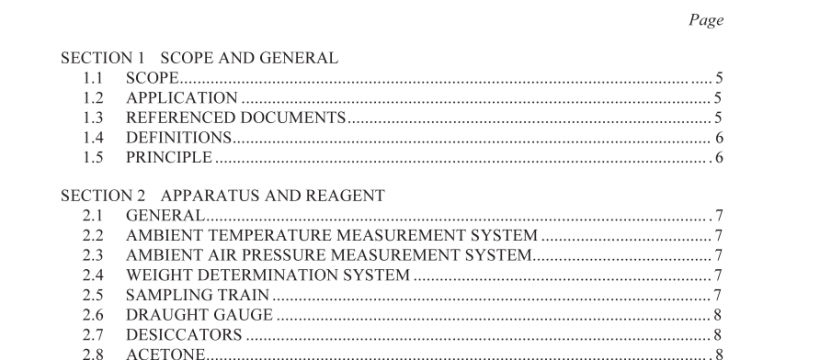AS NZS 4013:2014 pdf free download
AS NZS 4013:2014 pdf free download.Domestic solid fuel burning appliances—Method for determination of flue gas emission
6.9 SAMPLE MEASUREMENT
Filters, filter dishes and all other components that need to be weighed for the purpose of calculating the mass of emission shall be desiccated separately for at least 24 h at ambient laboratory temperature and pressure. Filter temperatures should not exceed 32°C at any time during the desiccation process. When successive measurements made at not less than hourly intervals show no change or gain in weight, each component shall be separately weighed and the weight recorded. Each component shall be identified so that its location in the collection system can be identified. The probe and filter holders shall be weighed directly or cleaned using acetone into a desiccated pre-weighed beaker. The washings shall be desiccated at ambient pressure and at a temperature of not more than 30°C. If acetone is used, an acetone blank of similar volume to acetone used for washing shall be prepared in a desiccated, pre-weighed beaker. The weight change in the blank shall be used to correct the weight of each beaker used for the samples.
8.1 GENERAL
Tests referred to in this Standard apply to a sample from a product line tested to demonstrate compliance of that product with this Standard. An appliance shall be submitted for test in the same condition as it would be if offered for sale.
8.2 DOCUMENTATION
An appliance submitted for test shall be provided with the following documentation:
(a) The name and address of the manufacturer.
(b) A description, including the model name and design identification.
(c) A copy of the operation and installation manuals.
(d) Design plans of the appliance, which shall include—
(i) overall dimensions;
(ii) firebox dimensions;
(iii) dimensions of the airways, including the cross-sectional area of restrictive inlets and outlets, and the dimension and location of the methods of control of gas movement through the appliance;
(iv) the total cross-sectional area of all combustion air inlets when the appliance is operating at its maximum and minimum burn rates;
(v) dimensions and location of baffle systems;
(vi) dimensions and location of refractory and insulation materials and details of their heat capacity and thermal resistance;
(vii) the dimensions and location of the flue gas outlet;
(viii) the dimensions, type, fit and location of all gasket materials;
(ix) details of the outer shielding and coverings, including dimensions and location;
(x) the dimensions, location, type and manufacturer of the combustor, if the appliance is fitted with a catalytic combustor;
(xi) the location, dimensions, cross-sectional area and gap tolerances of any bypass dampers;
(xii) the position, type and specification of any air circulation fan; and
(xiii) the position, type and specification of any water heating device.
All dimensions shall be in millimetres and tolerances shall be stated.
AS NZS 4013:2014 pdf free download
